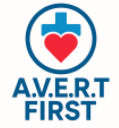- Conditions like diabetes, hypertension, asthma, COPD, heart disease
- Health coaching, diabetes prevention programs (DPP)
- Community-based interventions targeting food, exercise, medication adherence
Chronic Disease Prevention & Management in the Context of A.V.E.R.T. Harm
Introduction
Chronic diseases—such as diabetes, hypertension, heart disease, respiratory illnesses, and obesity—pose long-term health risks and are often influenced by behavioral, social, and environmental factors. Effective prevention and management require coordinated clinical care, community support, public health leadership, and proactive harm reduction strategies.
A.V.E.R.T. Harm integrates chronic disease management into its framework by promoting early detection, risk mitigation, patient empowerment, and systemic interventions to reduce cumulative and emerging harms related to chronic conditions.
1. Core Components
a. Prevention
-
Primary Prevention: Health promotion strategies to prevent disease onset (healthy diet, physical activity, vaccination, lifestyle counseling).
-
Secondary Prevention: Early detection through screenings, risk assessment, and monitoring biomarkers.
-
A.V.E.R.T. Harm Role: Uses structured assessment tools (S.C.A.N., H.A.R.M.O.N.Y.) to identify early warning signs of emerging chronic risks at individual, community, and population levels.
b. Clinical Management
-
Routine medical follow-up, medication adherence, and symptom monitoring.
-
Coordination of specialty care (cardiology, endocrinology, pulmonology).
-
Patient education on self-management, lifestyle adjustments, and early signs of complications.
-
A.V.E.R.T. Harm Role: Applies the A.B.C.D.E.™ framework for timely recognition and escalation of risks that may lead to acute complications or cumulative harm.
c. Social and Community Support
-
Case management to address social determinants of health (nutrition, housing, transportation, financial stability).
-
Peer-led education programs for lifestyle modification and chronic disease self-management.
-
Community-based interventions, such as group exercise programs or chronic illness support groups.
-
A.V.E.R.T. Harm Role: Empowers community and peer networks to reinforce healthy behaviors, recognize early warning signs, and provide ongoing support.
d. Public Health & Systems Interventions
-
Population-level surveillance to identify trends, disparities, and hotspots for chronic disease risk.
-
Policy initiatives promoting healthy environments, nutrition, and access to care.
-
Integration of chronic disease management into broader harm reduction and emergency response systems.
-
A.V.E.R.T. Harm Role: Guides leaders to anticipate emerging chronic disease trends and implement systemic preventive measures.
2. Skills and Competencies
Professionals and community supporters involved in chronic disease prevention and management should demonstrate:
-
Ability to conduct thorough risk assessments and health screenings.
-
Knowledge of evidence-based lifestyle interventions and clinical guidelines.
-
Skills in patient education, motivational interviewing, and peer mentorship.
-
Capacity to coordinate care across clinical, social, and public health systems.
-
Competence in using structured tools for early detection and escalation (A.B.C.D.E.™, S.C.A.N., H.A.R.M.O.N.Y.).
3. Integration with A.V.E.R.T. Harm
-
Early Risk Detection: Identifies emerging health threats and modifiable risk factors before progression.
-
Multi-Level Harm Reduction: Addresses individual behaviors, social determinants, and systemic factors that contribute to chronic disease.
-
Interdisciplinary Coordination: Links patients with clinicians, social services, community programs, and public health initiatives for comprehensive care.
-
Escalation Protocols: Provides clear pathways for intervention when complications, cumulative harm, or high-risk trends are identified.
4. Challenges
-
Fragmentation of care between providers, systems, and community services.
-
Limited access to preventive care or resources for underserved populations.
-
Behavioral, cultural, or economic barriers to lifestyle modification.
-
Chronic disease burden compounded by social and environmental stressors.
A.V.E.R.T. Harm addresses these challenges by providing standardized frameworks for early detection, peer-supported interventions, and structured escalation pathways to reduce cumulative harm.
5. Best Practices
-
Apply preventive, evidence-based strategies tailored to individual and community needs.
-
Integrate peer and community support to reinforce self-management and adherence.
-
Foster collaboration between clinical, social, and public health systems.
-
Monitor outcomes through data-driven evaluation and continuous improvement.
-
Include leadership and advocacy to address systemic barriers and health inequities.
6. Conclusion
Chronic disease prevention and management is most effective when clinical care, community engagement, and public health leadership are integrated. Within the A.V.E.R.T. Harm framework, stakeholders can detect emerging risks, mitigate cumulative harms, and implement proactive strategies to reduce long-term health complications. By empowering individuals, leveraging peer networks, and coordinating systems-level interventions, A.V.E.R.T. Harm ensures a comprehensive approach to chronic disease reduction and overall population well-being.





